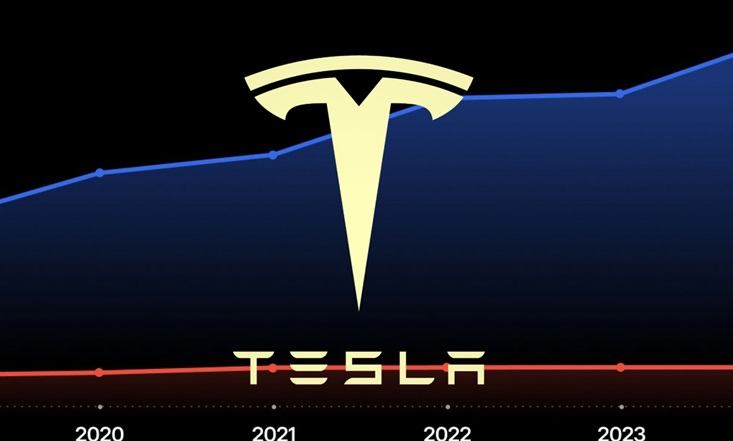Tesla is once again making headlines, this time with a bold claim about the safety of its Autopilot technology. In a recent post on X (formerly Twitter), the electric car giant touted its Q2 2025 safety report, stating that Teslas equipped with Autopilot were involved in just one accident for every 6.69 million miles driven. That’s a figure Tesla says is nearly ten times better than the U.S. average of one accident per 702,000 miles. But is this claim as impressive as it sounds? Let’s dig into the numbers and see what’s really going on behind the scenes.

Tesla’s Claim (as per the X post):
- Autopilot-equipped Teslas had one accident per 6.69 million miles driven in Q2 2025.
- This is a tenfold improvement over the U.S. average of one accident per 702,000 miles.
- Data source: Tesla’s own Vehicle Safety Reports.
What Tesla’s Data Shows
According to Tesla’s own Vehicle Safety Reports, the company’s cars using Autopilot are racking up millions of miles between accidents. On paper, that’s a huge leap forward for automotive safety, especially when compared to the national average reported by agencies like the National Highway Traffic Safety Administration (NHTSA).
Tesla’s report is based on data collected directly from its fleet, which is constantly sending information back to headquarters. The company has long argued that its advanced driver-assistance features, like Autopilot, make driving safer for everyone.
- Tesla’s numbers only count “accidents” as defined by airbag deployment or significant events, not minor fender-benders or incidents that don’t trigger the car’s sensors.
- Critics point out that this can undercount minor crashes, which are more common in city driving.
Highway vs. City Driving
- Autopilot is mostly used on highways, which are statistically much safer than city streets (fewer intersections, pedestrians, and unpredictable events).
- NHTSA data shows that highway driving has a much lower accident rate than urban driving.
- Tesla’s data is therefore biased toward safer driving conditions, making the comparison to the overall U.S. average (which includes all types of roads) less direct.
No independent third-party audit of Tesla’s safety data is available. All numbers come from Tesla’s own reporting. NHTSA and other agencies have not published directly comparable, independently verified data for Autopilot or FSD (Full Self-Driving).
However, there’s more to the story. Tesla’s accident numbers only count incidents where airbags deploy or where the car’s sensors detect a significant event. That means minor fender-benders and low-speed scrapes—common in city driving—often don’t make it into the report.
Critics also point out that Autopilot is mostly used on highways, which are statistically much safer than city streets. Highways have fewer intersections, pedestrians, and unpredictable situations, so it’s no surprise that accident rates are lower there. When Tesla compares its Autopilot numbers to the national average—which includes all types of roads and all kinds of accidents—it’s not exactly an apples-to-apples comparison.
| Metric | Tesla Autopilot (Q2 2025) | U.S. Average (All Vehicles) |
|---|---|---|
| Accident Rate | 1 per 6.69 million miles | 1 per 702,000 miles |
| Data Source | Tesla Vehicle Safety Report | NHTSA/FHWA |
| Road Type Bias | Highways (mostly) | All roads |
| Includes Minor Crashes? | No | Yes |
| Independent Verification | No | Yes |
What the Experts Say
Safety experts and agencies like the NHTSA have yet to independently verify Tesla’s claims. While there’s no doubt that Tesla vehicles perform well in crash tests and have strong safety records, the lack of third-party audits for Autopilot data leaves some questions unanswered.
Insurance industry data also paints a mixed picture. Teslas tend to have lower injury rates, but repairs can be costly due to the high-tech sensors and parts involved.

Real-World Incidents
It’s also important to remember that there have been high-profile crashes involving Autopilot, some of them fatal. Investigations often reveal that drivers were not paying full attention, or that the system was used in situations it wasn’t designed for. Tesla is quick to remind owners that Autopilot is not a fully self-driving system and that drivers must remain alert at all times.
- There have been high-profile crashes involving Autopilot, some fatal, which are under investigation by NHTSA and NTSB.
- Most Tesla accidents still occur with Autopilot disengaged, but some have happened with the system active, often due to driver inattention or system limitations.
Insurance and Repair Data– Insurance industry data (e.g., from IIHS, Highway Loss Data Institute) shows Teslas generally have good safety records in terms of injury rates, but repair costs are high due to expensive parts and sensors.
User Experience– Tesla owners report feeling safer with Autopilot on highways, but many caution against overreliance, especially in complex or urban environments.
So, is Tesla’s Autopilot really ten times safer than the average American car? The answer is: it’s complicated. There’s no doubt that Autopilot can make highway driving safer, but the numbers Tesla shares don’t tell the whole story. Until there’s independent verification and more transparency about what’s being counted, it’s wise to take these claims with a grain of salt. For now, Tesla’s technology is pushing the industry forward, but the debate over its true safety impact is far from settled.
Related Post
